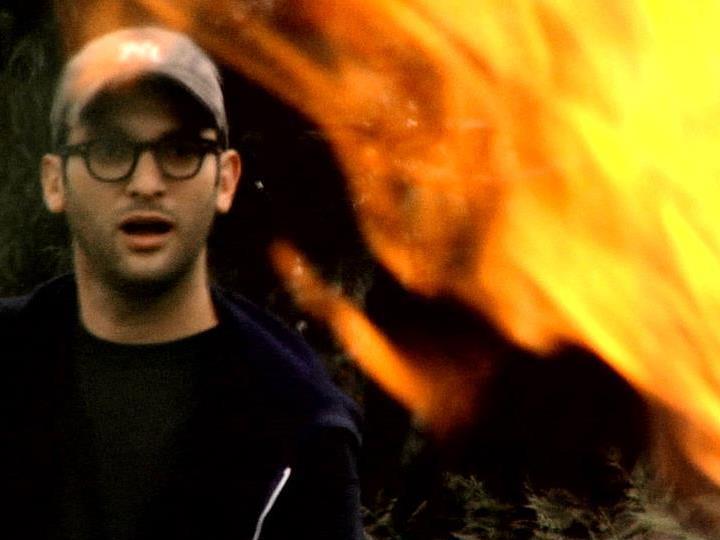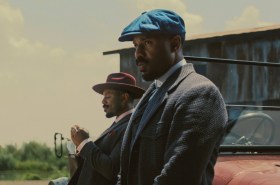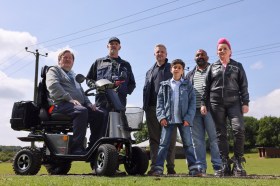In 2010, filmmaker Josh Fox (Memorial Day) set out to expose the impact of drilling for natural gas – particularly via the process of hydraulic fracturing, or fracking as it is known – and cemented himself as one of the faces of the fight against its proliferation in the process. Charting the plight across small town America, his Gasland mobilised the uninitiated, courted significant controversy around the world, and earned an Academy Award nomination for best documentary. Made over the following three years, Gasland Part II endeavours to tell the next chapter of his story.
Just as the first film combined a personal tale of a man wishing to save his own environment with the broader context of a topic that spans the globe, so too does the sequel. Footage familiar to viewers of the initial instalment shows a serene setting surrounded by trees, seemingly in quiet and isolated surrounds: Fox’s family home. His quest originally commenced when he became aware that his house in the woods of Milanville, Pennsylvania, next to a stream that feeds the Delaware River, was in the vicinity of proposed drilling into the Marcellus Shale. Though he refused to acquiesce to the attempts of gas companies to secure his permission to access his backyard, now his patch of land is close to being surrounded by their efforts on neighbouring properties, as well as affected by the resulting seeping of by-products into the local water.As Gasland Part II tells the latest part of his tale, it becomes a portrait of both how much and how little has changed in the intervening years. The industry has progressed between features, with wells and pipelines dotting the American content; the ability of ordinary citizens to avoid their intrusion, or the after effects, has not improved. Political sentiments surrounding natural gas remain murky, though big business forges ahead. Water contamination, air pollution and health problems recur, as opposition intensifies. More may be aware of the subject, courtesy of increased media attention in the wake of Gasland; however uncertainty still reigns in what Fox dubs ‘America’s fracking frenzy.’
Encompassing all-related, relevant aspects of such a complicated area, including the BP oil spill and climate change, is an impossible task, but one Fox must be commended for trying to achieve once more. He not only flits through his own community and wanders around the rest of his country, but also jumps over to Australia to contemplate the situation in rural Queensland as a glimpse of the worldwide scenario. The many issues at play are complex, as are the range of viewpoints, so it is far from surprising that Gasland Part II suffers from its density. His approach is purposefully scattershot yet pieces together a picture of the difficulties and dramas that is suitably multifaceted.
Within the deluge of information, it is the horrors that expectedly resonate and raise an emotional response – the repeated reports of being able to light water on fire; the tear-streaked confessions of a mother ill from fracking chemicals found in her lungs and concerned for her children’s future; the revelation by the ‘godfather of cement’ that a minimum one in twenty wells will immediately fracture, fail and start leaking; the recollections of threats levelled at Australian farmers that did nothing more than stand up for their rights; the slick manoeuvring of the oil lobby through government; the criminal repercussions for Fox when he pursues all avenues. Clips of interviews from the likes of The Colbert Report and tongue-in-cheek music cues, such as the use of The Beach Boys’ Good Vibrations and The Doors’ Light My Fire, help add levity amid the sadness and seriousness.
Fox’s documentary style has not evolved between films, nor has his objectivity – but in Gasland Part II, neither aesthetic polish nor the absence of an impassioned stance is the point; indeed, both would counteract the clear activist intention of the feature. He wrangles interesting discussions from his array of talking heads, presents facts in a largely accessible manner, and never wavers in his commitment to the cause. Adhering to the same template as his earlier offering, his return efforts still make for compelling viewing. A successful continuation of a crusade that shows no sign of ceasing, the dark and damning Gasland Part II offers more of the same – and for the film’s construction, though not the underlying subject, for once that’s a good thing.
Rating: 3 ½ out of 5 starsGasland Part II
Director: Josh Fox
USA, 2013, 125 mins
Environmental Film Festival Melbourne
www.effm.org.au
4 – 12 September
Actors:
Director:
Format:
Country:
Release:





